| Columns Retired Columns & Blogs |
Congratulazioni Michelangelo
I measured the Volumio Primo with my Audio Precision SYS2722 system (see the January 2008 "As We See It"). I used test-tone WAV and AIFF files on a USB stick inserted into one of the four USB Type A ports on the Primo's rear. I selected the appropriate directory on that stick with the Volumio Settings page that appeared on my iPad mini after I logged on to the Volumio Wi-Fi network. The Primo is specified as being able to decode PCM data with sample rates up to 768kHz. I don't have any test tones encoded at that sample rate, but the Primo worked correctly with files with sample rates up to 384kHz that I did have.
As I didn't have access to something like the GeerFab D-BOB format converter that Kal Rubinson reviewed in May 2020, I couldn't examine the behavior of the Primo's HDMI output. I did look at the coaxial S/PDIF output, which, according to the interior photo on the Volumio website, is taken from the stock ASUS Tinker Board SBC that is the Primo's platform. This outputs data with sample rates up to 192kHz but with relatively high jitter: 2.733ns with data representing the 16-bit Miller/Dunn J-Test signal sampled at 44.1kHz. This jitter can be seen in fig.1, which shows an "eye pattern" plotted over one "unit cycle." Using the Audio Precision's digital oscilloscope function, I overlaid successive snapshots of the Primo's S/PDIF output taken over a 60-second time window. With an ideal transmission system, all the pulse transitions in the datastream will overlay one another to produce an image of a wide-open "eye," with just one trace visible. This is not the case in fig.1, which has visible variation in the beginnings and endings of the waveform.
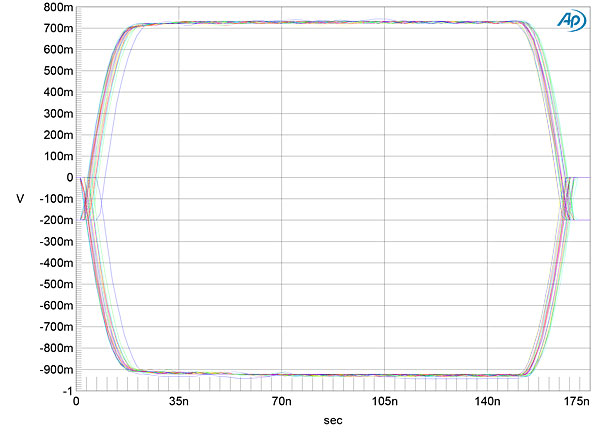
I performed a complete set of measurements on the Primo's single-ended analog outputs, which are taken from Volumio's custom DAC board. The maximum output level at 1kHz with a high 100k ohm load was slightly lower than the CD Standard of 2V, at 1.72V, sourced from a low impedance of 99 ohms at all audio frequencies. The analog outputs preserved absolute polarity (ie, were noninverting).
The Volumio Primo offers a choice of three FIR (finite impulse response) reconstruction filters, labeled Fast Rolloff (FR), Slow Rolloff (SR), and Minimum Phase (Min). (There is also an IIR—Infinite Impulse Response—filter, which I left set at 47kHz, as used by KR for his auditioning.) Fig.2 shows the FR filter's impulse response with 44.1kHz data. It is typical of a conventional linear-phase filter with a symmetrical ringing before and after the single full-scale sample. The SR filter's impulse response (fig.3) is actually that of a classic minimum-phase filter, with all the ringing following the single high sample. This is not what I was expecting, and neither was the Min filter's impulse response, which featured a small amount of pre-ringing (fig.4). This response is identical to that of the "Hybrid, Fast Rolloff, Minimum Phase" filter offered by the Okto dac8 Stereo D/A processor that I review elsewhere in this issue and that I believe uses the same ESS ES9038 DAC chip. I suspect that the Volumio's SR and Min filters are mislabeled.
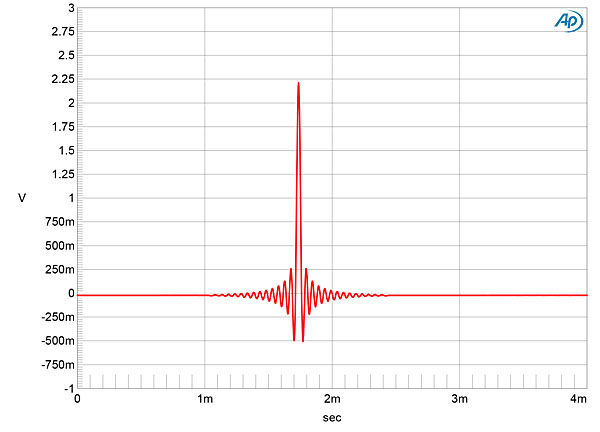
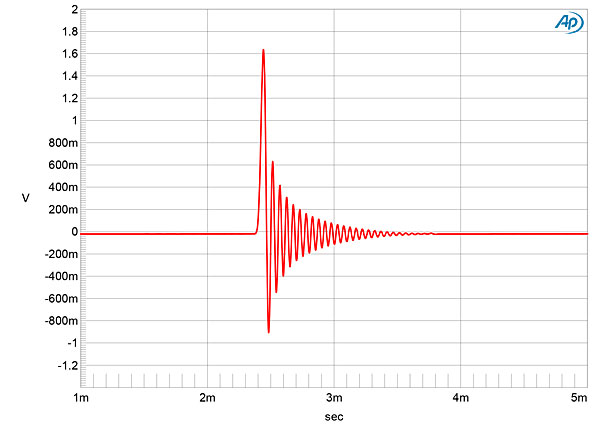
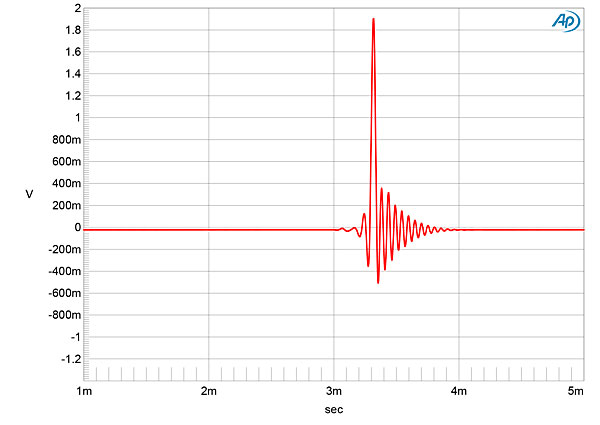
The three filters behaved almost identically in the frequency domain. The ultrasonic rolloff with 44.1kHz data (fig.5, magenta and red traces) indicates that the filters are all apodizing types, reaching full stop-band attenuation at half the sample rate, which is shown by the vertical green line in this graph. The aliased image at 25kHz of a full-scale tone at 19.1kHz (cyan, blue) is suppressed by more than 80dB, with some higher-order images present. The harmonics associated with the 19.1kHz tone are all very low in level.
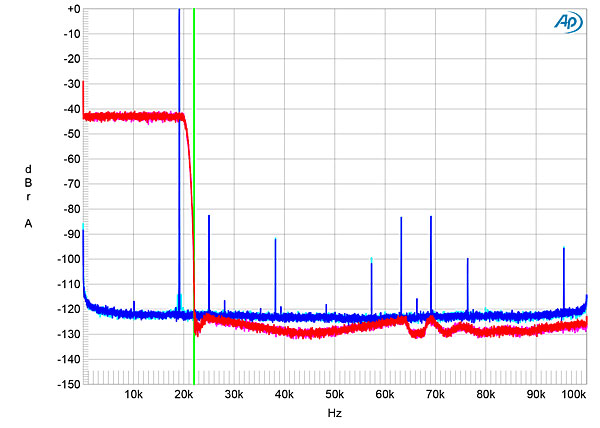
Fig.6 shows the Primo's frequency response with data sampled at 44.1, 96, and 192kHz. There is a very small amount of passband ripple at each sample rate. Channel separation at 1kHz was excellent, at 98dB, L–R, and 96dB, R–L, and power supply–related spuriae in the Primo's low-frequency noise floor were extremely low in level (fig.7). With dithered data representing a 1kHz tone at –90dBFS, an increase from 16-bit data to 24-bit data lowered the Volumio's noise floor by close to 18dB (fig.8). This implies a resolution of 19 bits, and when I played undithered data representing a tone at exactly –90.31dBFS, the waveform was symmetrical, with negligible DC offset and the three DC voltage levels described by the data clearly defined (fig.9).
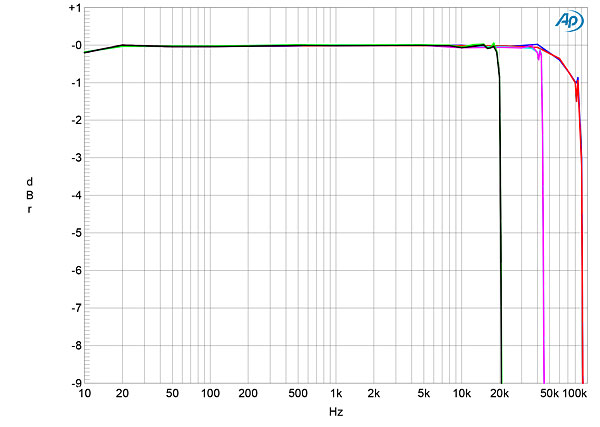
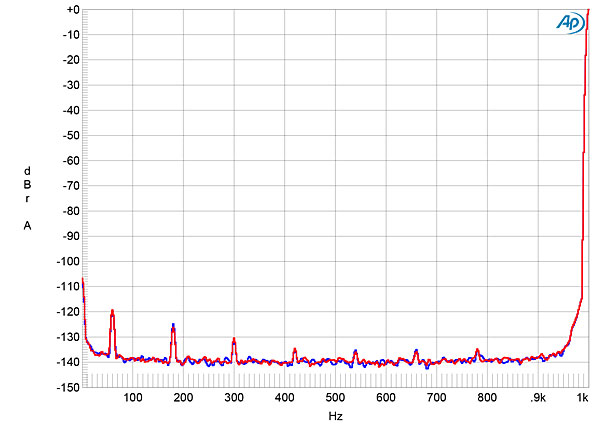

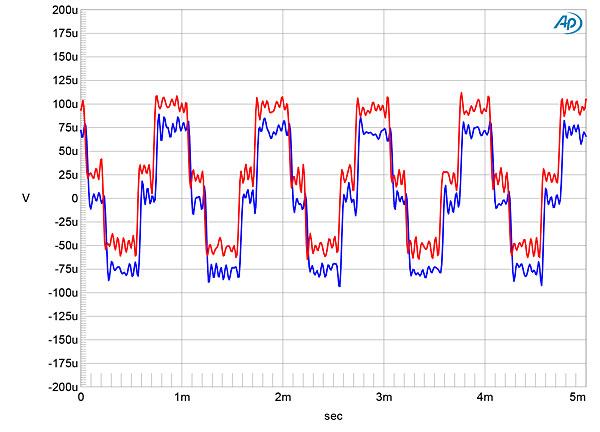
The Volumio Primo produced very low levels of harmonic distortion with full-scale data even with the punishing 600 ohm load (fig.10). The second harmonic is the highest in level, at just above –110dB (0.0003%), with the third harmonic almost equal in level in the left channel (blue trace) but 9dB lower in the right channel (red trace). Intermodulation distortion (fig.11) was also very low and below the levels of the aliased images at 24.1kHz and 25.1kHz.
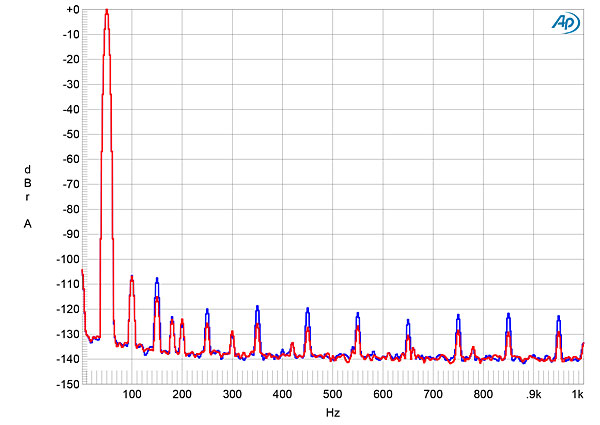
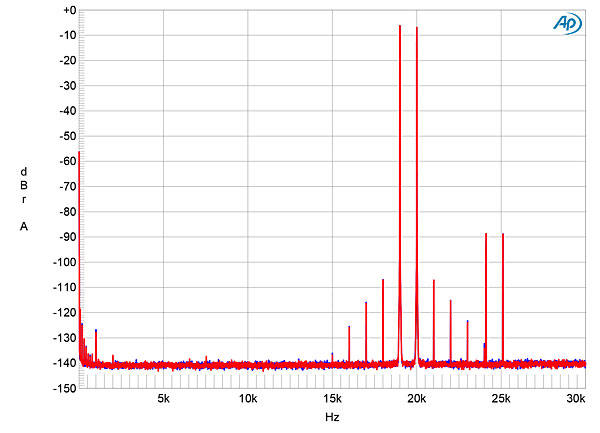
Fig.12 shows the spectrum of the Volumio Primo's analog outputs decoding high-level, 16-bit J-Test data. All the odd-order harmonics of the undithered low-frequency, LSB-level squarewave lie at the correct levels, indicated by the sloping green line. However, the central spike that represents the high-level tone at one-quarter the sample rate is slightly broadened at its base, which implies the existence of random low-frequency jitter. This can also be seen with 24-bit J-Test data (fig.13).
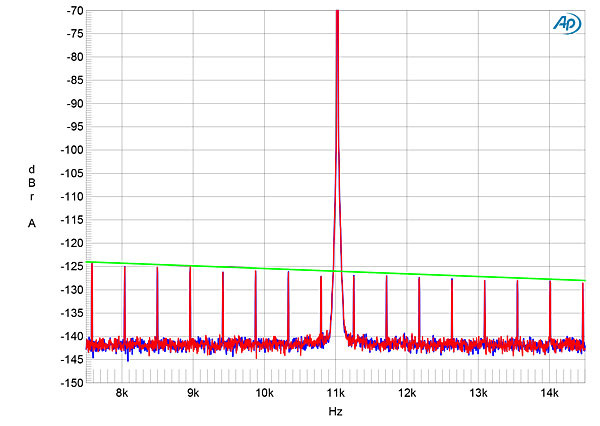
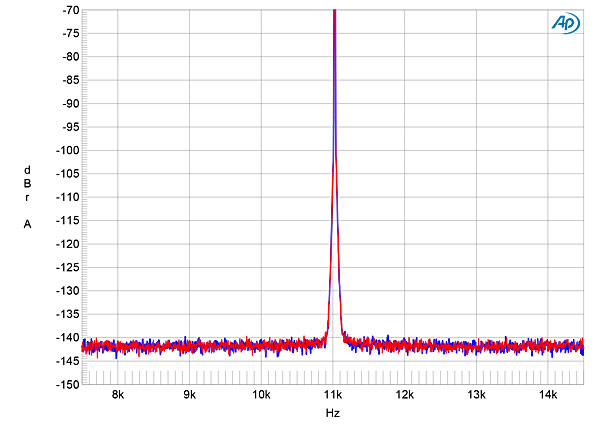
The Volumio Primo offered superb measured performance from its analog outputs, which is even more commendable when you consider that this extremely affordable product is also a full-function music streamer.—John Atkinson

Congratulazioni Michelangelo

I tried this and liked it - except for the Volumio SW user interface, which I hated.
But it is impressive that Kal liked the internal DAC so much - no need for a DAC makes this a real bargain.
I wouldn't use it without a Roon or other interface. Fortunately, with it's plugin library you have a large number of SW user interfaces available to choose from.
If someone is just looking for an audiophile digital streamer- without DAC - I'd recommend the Stack Audio Link II. Can interface with almost any SW (and is Roon certified) and allows you to choose between network or direct to PC USB streaming.

Really enjoyed your review Kal. I am one of "Volumio's techie users", being a principle contributor to its Spotify plugin.
One thing worth mentioning is Volumio has a very large, friendly and engaging user community. If you ever need help, people are always out there to give friendly advice.
And for others out there who enjoy contributing to open-source software projects, we are always looking for more contributions!

Hi, am using pro-jects stream box s2 ultra which runs a reduced version of volumio, unfortunately without the possibility to use the spotify connect plugin (possibly in favour for stability, not sure). While Volumio has the fantastic ability to enable mixing all music sources (own server or usb ssd with music from various streaming services , e.g. Spotify) in one and the same playlist, i really suffer from the very limited access to existing contents in Spotify due to Volumio/Libraspot not reading beyond entry number 50 (or so) in any list (it appears), meaning long playlists created in Spotify app show up truncated in Volumio/Libraspot, long album lists of very prolific artists do not show their earlier albums and so forth. While running and searching in parallel in the spotify app and carrying over e.g. album titles into volumio/libraspot somewhat mitigates that issue, the truncated personal original spotify playlists remain an issue hard to live with. Do you have any suggestion to that? Many thanks in advance and keep up the good work!!
BR, hb72

Yes, the Spotify Web API returns a maximum of 50 objects per call. I never had the time to add pagination to the plug-in. Hopefully someone can pick up evolving the plug-in - that would be the first thing to do.

Thank you so much for prompt reply - would be really great to add pagination there
Tx

I love Volumio. It's more clunky than Roon -- I'm also a lifetime Roon subscriber -- but due to the Spotify plugin you can access so much more music. And it sounds great, as good or better than Roon to my ears. I wish there was a Soundcloud plugin, but I understand that is a problem on Soundcloud's side. Thanks for your good work!

Hi Aaron, it turns out there is a new beta release of a Soundcloud plugin for Volumio. I just installed it and it works great!
It doesn't support authentication, so you can't log in. But just search for your username to see the playlists you've created.
https://community.volumio.org/t/plugin-soundcloud/43718

Fantastic! Thanks for the heads up!

I always wait for your sound quality reviews as I have paid great attention to the changes and the improvements you have made in your systems over the years and when you are impressed with the stock DAC that is saying something.

Thank you for your great review.
First of all I liked the analog output (stock DAC), too. It is excellent for the price. In absolute terms I found the performance to be "ok".
In my opinion the main strength of the Volumio is internet streaming (Qobuz, Tidal, ..). The quality of digital data seems to be very high. I came to the finding that the device does not implement fully effective jitter/noise reduction, though. Adding a inexpensive USB-converter like Audioquest jitterbug or - better - ifi ipurifier brought the data stream on a level of my Auralic Aries (first version) at least. That is great!
The only thing I do not like is the missing sleep/wake-up function respectively on/off knob. But given the price this is a minor concern, of course...